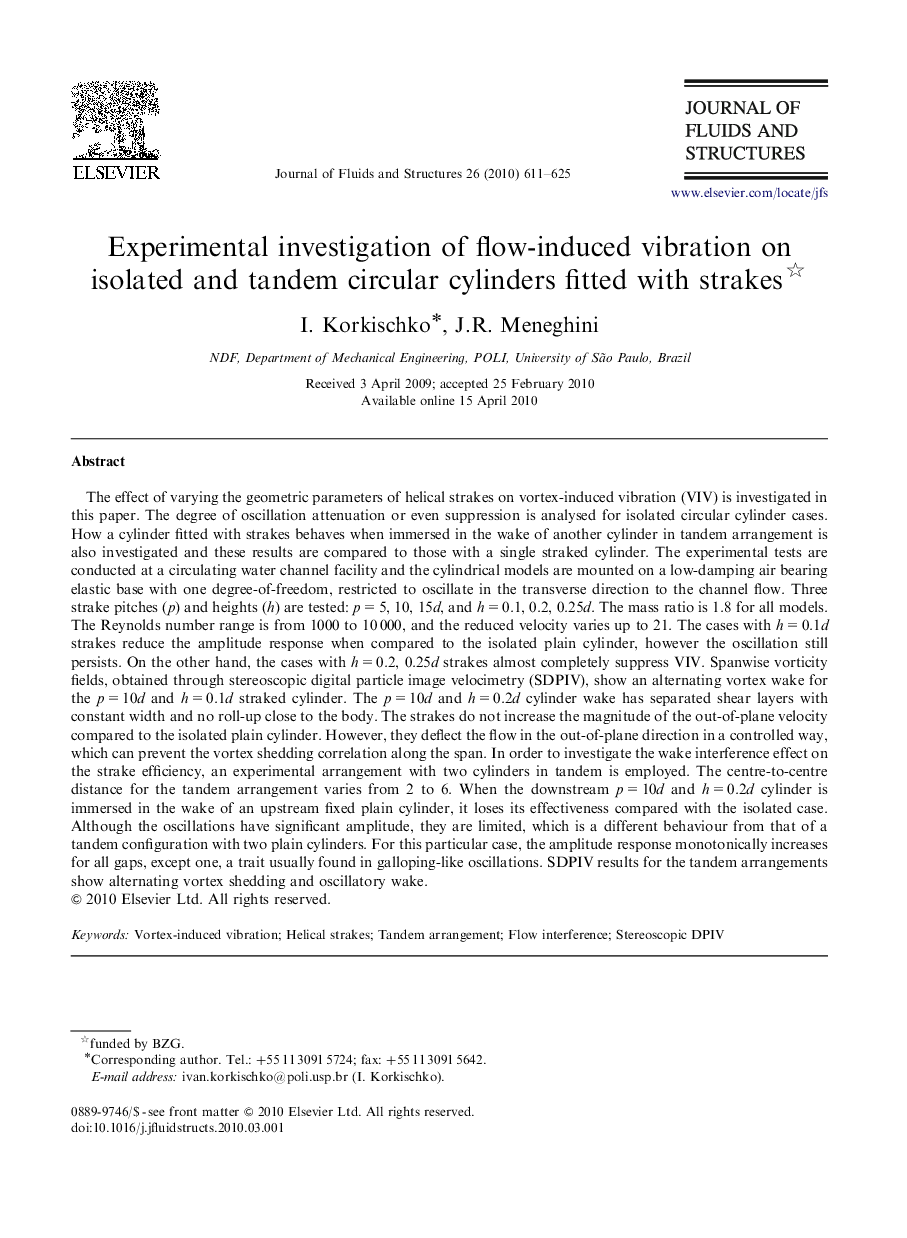| Article ID | Journal | Published Year | Pages | File Type |
|---|---|---|---|---|
| 797177 | Journal of Fluids and Structures | 2010 | 15 Pages |
The effect of varying the geometric parameters of helical strakes on vortex-induced vibration (VIV) is investigated in this paper. The degree of oscillation attenuation or even suppression is analysed for isolated circular cylinder cases. How a cylinder fitted with strakes behaves when immersed in the wake of another cylinder in tandem arrangement is also investigated and these results are compared to those with a single straked cylinder. The experimental tests are conducted at a circulating water channel facility and the cylindrical models are mounted on a low-damping air bearing elastic base with one degree-of-freedom, restricted to oscillate in the transverse direction to the channel flow. Three strake pitches (p) and heights (h) are tested: p=5, 10, 15d, and h=0.1, 0.2, 0.25d. The mass ratio is 1.8 for all models. The Reynolds number range is from 1000 to 10 000, and the reduced velocity varies up to 21. The cases with h=0.1d strakes reduce the amplitude response when compared to the isolated plain cylinder, however the oscillation still persists. On the other hand, the cases with h=0.2, 0.25d strakes almost completely suppress VIV. Spanwise vorticity fields, obtained through stereoscopic digital particle image velocimetry (SDPIV), show an alternating vortex wake for the p=10d and h=0.1d straked cylinder. The p=10d and h=0.2d cylinder wake has separated shear layers with constant width and no roll-up close to the body. The strakes do not increase the magnitude of the out-of-plane velocity compared to the isolated plain cylinder. However, they deflect the flow in the out-of-plane direction in a controlled way, which can prevent the vortex shedding correlation along the span. In order to investigate the wake interference effect on the strake efficiency, an experimental arrangement with two cylinders in tandem is employed. The centre-to-centre distance for the tandem arrangement varies from 2 to 6. When the downstream p=10d and h=0.2d cylinder is immersed in the wake of an upstream fixed plain cylinder, it loses its effectiveness compared with the isolated case. Although the oscillations have significant amplitude, they are limited, which is a different behaviour from that of a tandem configuration with two plain cylinders. For this particular case, the amplitude response monotonically increases for all gaps, except one, a trait usually found in galloping-like oscillations. SDPIV results for the tandem arrangements show alternating vortex shedding and oscillatory wake.
